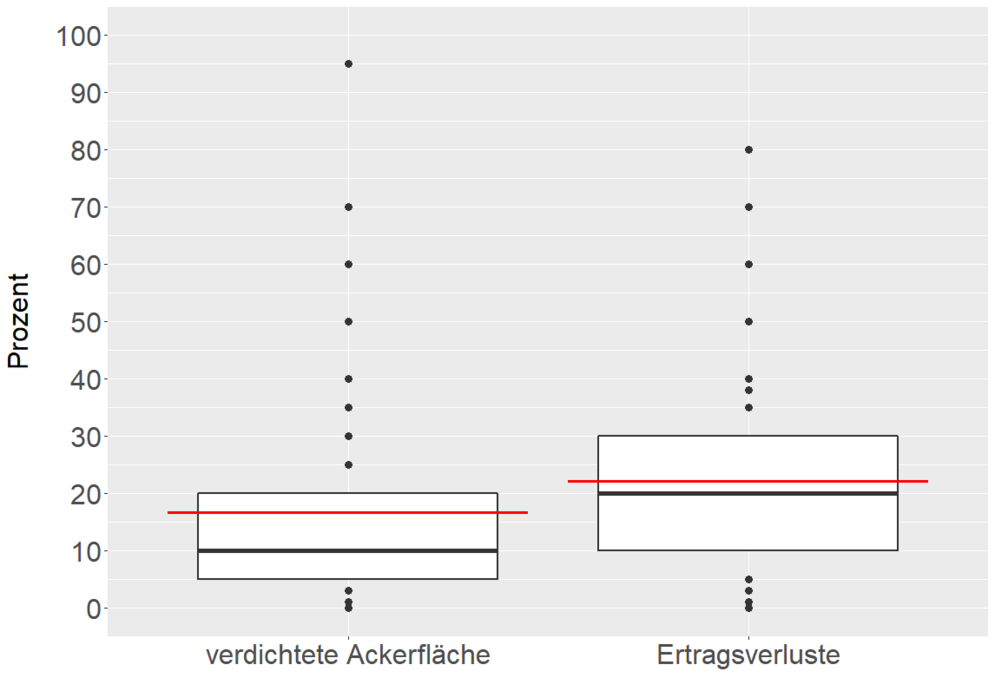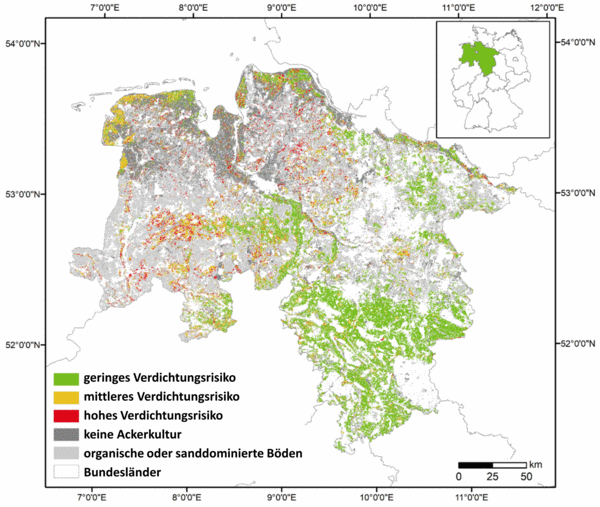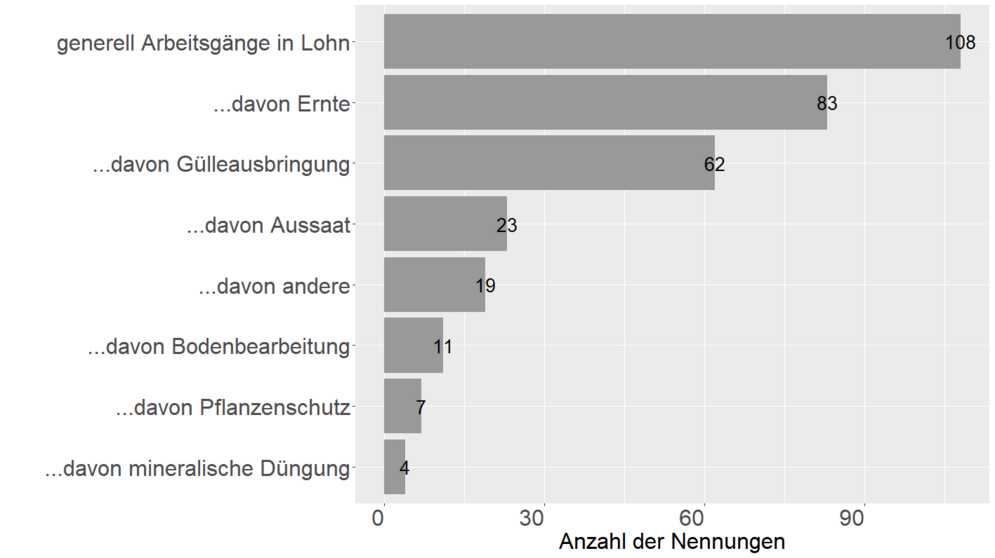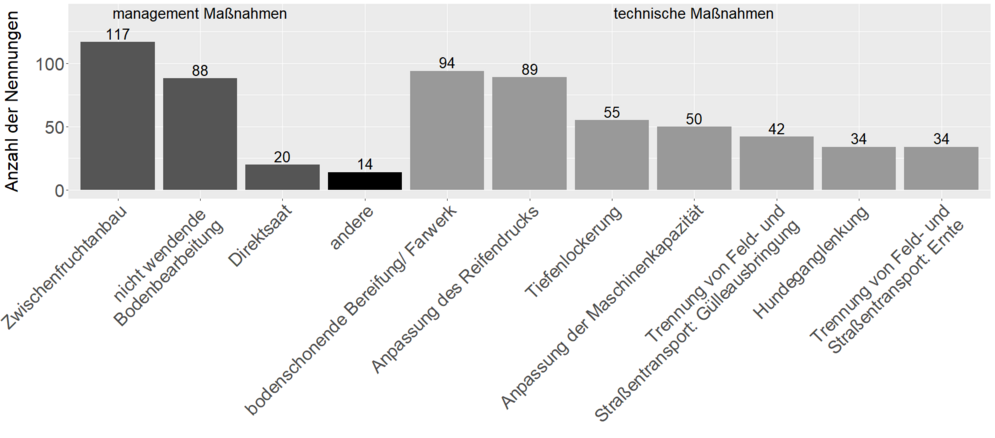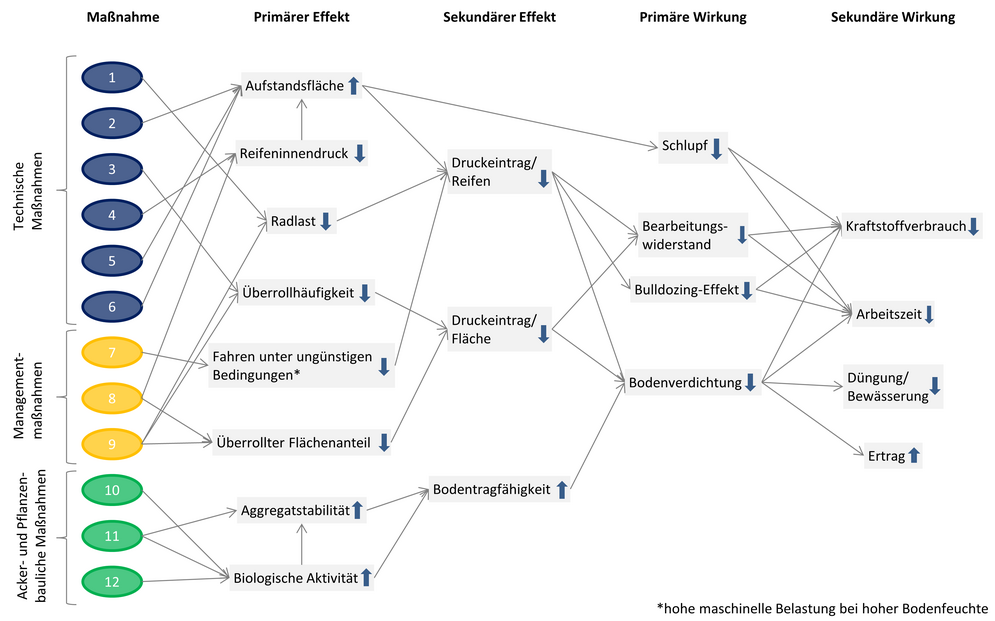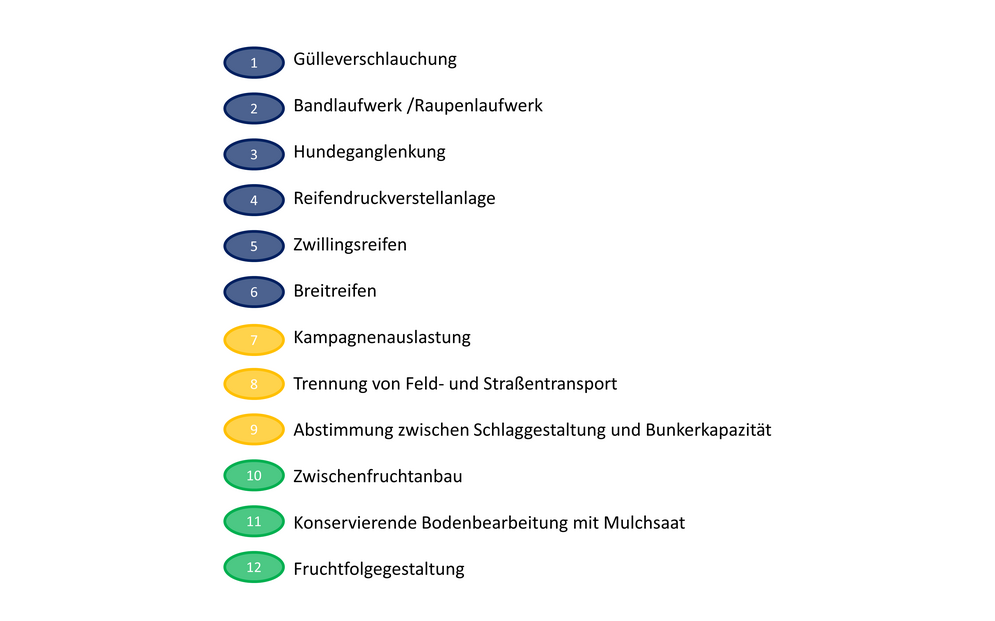Socioeconomic analyses
To avoid soil compaction, various options are available for the farmers. The suitability with regard to economic aspects depends on local conditions and farm structure and must be assessed on a farm specific basis in each individual case.
In the second phase of SoilAssist, the subproject "Socioeconomic analyses" focuses on the evaluation of technology and management options at the individual farm level. To show the complex requirements of soil protection at farm level (within a year as well as multi-periodically), a model for farm optimization will be further developed and applied for different farm types. As a result, the profitable different measures to avoid soil compaction depending on operational and natural conditions will be shown. Both possible yield effects and follow-up costs in the form of farm inputs are taken into account.
First of all, representative company structures for Lower Saxony are modeled. These should reflect different farm orientations and sizes as well as different natural conditions of the respective federal state. Selected measures to avoid soil compaction will be economically evaluated for these different farms using a model. This shows the dependence of the relative excellence of the different measures on certain parameters. Furthermore, the costs that may arise are to be compared with the potential benefits.
Derivation of typical farms for selected regions in Lower Saxony
In the first project phase, high-resolution GIS data on land use, soil, and climate in Lower Saxony were overlaid. With this data basis, the agricultural areas were classified according to the approach of Lorenz et al. (2016) regarding the soil compaction risk (see figure "compaction risk").
From these results, suitable districts are identified in the second project phase. They show 1) relevant cultivation structures (high proportion of crops associated with high machine weights for farming) and 2) different compaction risks. For these districts, representative farms are derived from InVeKoS (Integrated Control and Management System), soil, and climate data and supplemented by data from a survey of farmers conducted during first project phase (see figures: "Operations performed by contractors" and "Applied measures"). As a result, the representative farms are described by all relevant parameters that cause soil compaction and influence possible costs and benefits of soil protection measures. These include natural (soil and climate) and farm-specific (arable land, crop rotation, machinery, labour, contracting of operations to contractors) parameters. Combined with quantitative data on the costs and possible benefits of soil conservation measures, these parameters form the input data for farm modelling.
In cooperation with the subprojects "Socio-economic Analyses" and "Acceptance and Knowledge Transfer" a nationwide online survey among farmers on the topic of soil compaction was conducted in spring 2017. The aim was to highlight the relevance of the topic among farmers and to get an impression of the distribution of the use of soil conservation measures and the awarding of work to contractors. Furthermore, the survey was intended to provide information on how intensively different advisory services are used, where possible gaps exist and to what extent digital advisory services are perceived (in the form of apps).
In the section below, selected results are presented and explained.
Operations conducted by contractors
Information on the outsourcing of operations to contractors was provided by 134 farmers. Of these, 80% (n=108) stated that they subcontracted work. More than half of the contracted operations are "harvesting" (n=83) and " manure spreading " (n=62). Less than a quarter reported that they award the operations "sowing" (n=23), others (unspecified, n=19), tillage (n=11), plant protection (n=7) and mineral fertilizers (n=4) to contractors (see figures: "Operations conducted by contractors").
Soil protection measures
159 farmers answered the question about the soil conservation measures already applied on the farm. Eleven measures were given and a multiple selection was possible. The first three measures from the left in the figure "Applied measures" (catch crop cultivation, non-turning tillage, direct sowing) do not exclusively aim at avoiding or reducing soil compaction. These measures from the management area contribute to stabilizing the soil structure, thus making the soil more stable and preventing soil compaction. The seven measures on the right hand side of the figure are purely technical measures which are specifically used to avoid (in the case of deep ploughing for remediation) soil compaction. The most frequently applied measure is intercrop cultivation (n=117) followed by soil-protecting tires/chassis (e.g. twin tires, tape drive, wide tires) (n=94) and the adjustment of the internal tyre pressure (with tire pressure adjustment system / RDA or quick exhaust valves for manual pressure control) (n=89) (see illustrations: "Applied measures").
Identification and evaluation of criteria for assessing the costs and economic benefits of soil conservation measures
The first phase of the project quickly showed that additional costs are extremely variable and are dependent on individual farm structures (cultivation structure, plot size, distance between field and farm, machinery, laborer) and natural conditions (soil and climate). The effectiveness, the effort and also the necessity are also highly variable in space and time. Consequently, it is hardly possible to make a sweeping statement about the additional costs of improved soil management and protection. Therefore, in the first project phase, in cooperation with the Thünen Institute of Agricultural Technology, possible measures were compiled and presented in the form of fact sheets. The measures can be divided into technical, management, arable cultivation, and plant cultivation measures (see figure "Effect-Impact Diagram" and "Effect-Impact Diagram Legend").
The primary effect describes the effect at the machine or on / in the soil, the secondary effect describes the soil protecting effect. The primary impact describes the soil-protecting impact and the secondary describes the economic impact. By avoiding soil compaction, yield losses can be avoided or the yield can even be increased or stabilized, the costs for fuel, fertilization and irrigation can be reduced. On the other hand, there are one-off investment costs and variable running costs (e.g. working time, set-up time, planning effort), which depend to a large extent on the equipment of the farm (areas, crop rotations, machinery, laborer) and must therefore be considered from a farm specific perspective. In the case of arable and plant cultivation measures, it is important to further consider and emphasize that these measures can achieve far more effects and impacts (phytosanitary aspects, humus formation, nutrient management, water storage, CO2 binding).
The measures described above will be supplemented by quantitative parameters in the second project phase. On the one hand an intensive literature study will be carried out and on the other hand empirical data will be obtained in the work package "Transdisciplinary Evaluation of Soil Compaction". Furthermore, the identified and investigated measures of the subproject "Innovative Strategies and Measures for Sustainable Soil Management in Agriculture" will be evaluated with regard to additional costs. Together with the operational parameters, these data form the input data for the operational modelling.
Operational modeling and optimization for the evaluation of technology and management options
In this work package the results of the previous work (criteria for the evaluation of the economic benefit, typical farms for selected regions in Lower Saxony) will be linked. For this purpose, the Farm Boss® single farm optimization model will be extended in a way that measures to avoid/reduce soil compaction can be evaluated and assessed on a single farm basis for different site and operating conditions. For this purpose, the model must be supplemented by the components "machine-specific field working days" and "additional costs for soil conservation measures".
The location-, machine- and weather-dependent field working days are derived with the help of the decision matrix trafficability for the respective crops and operations. The additional costs for soil conservation measures were determined in the previous work. In order to illustrate a possible benefit from avoiding soil compaction, (1) an intensive literature study is carried out to determine the range of yield effects of soil compaction and (2) data from the survey of the first project phase is used, in which the area affected by soil compaction and the yield losses on these areas were queried (see figures: "Yield losses and compacted arable land in percent").
As a result of the operational modelling, a solution is generated which leads to maximum economic success under given restrictions (trafficability days without compaction risk) and operating conditions. It is discussed under which circumstances and to which extent the application of soil conservation measures to avoid soil compaction can be economically advantageous. Adaptation strategies for a higher or comparable income while protecting the soil are identified. The results will help to raise farmers awareness of the economic impacts of soil compaction.
Results on this topic can be found here at the end of the 2nd project phase.
